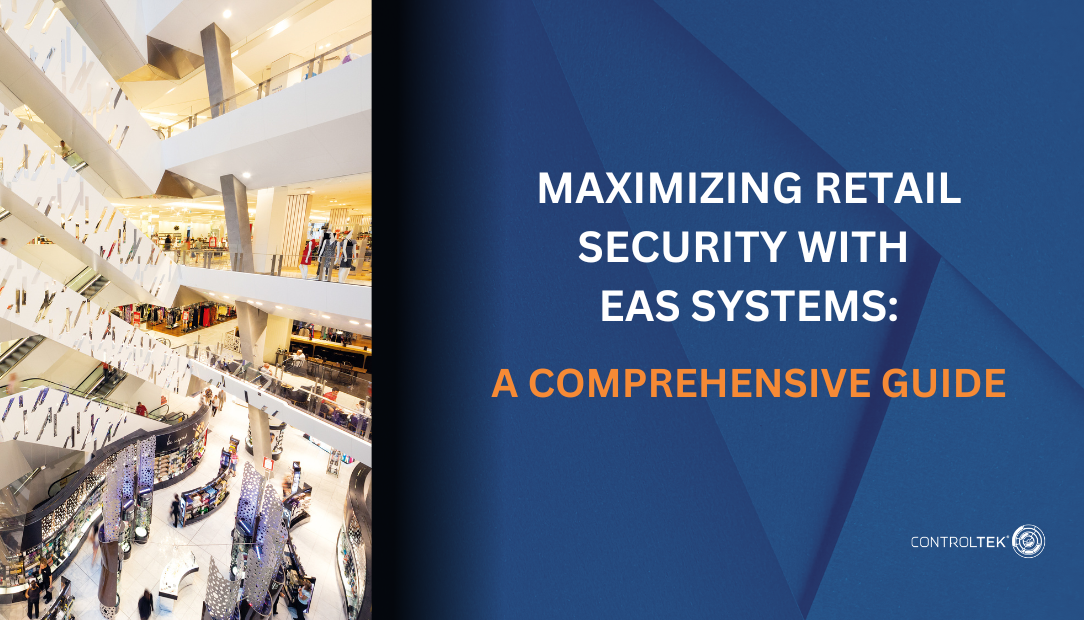Maximizing Retail Security with EAS Systems: A Comprehensive Guide
August 22, 2023In the competitive landscape of retail, businesses must prioritize security to protect their assets and maintain a healthy bottom line. One powerful tool that has proven effective in loss prevention is the Electronic Article Surveillance (EAS) system. By deterring theft and ensuring the safety of your merchandise, EAS systems can significantly contribute to the success of your retail business.
In this blog, we will discuss the ins and outs of EAS systems, their various components, and how they can be tailored to fit your store's unique needs.
What is an EAS System?
Electronic Article Surveillance (EAS) is a technology designed to prevent shoplifting by detecting tagged items as they pass through specialized antennas at a store's entrances and exits. When an unauthorized removal occurs, the system triggers an alarm, alerting staff to the potential theft.
EAS systems consist of three main components:
- EAS Tags: Small devices attached to merchandise that can be deactivated or removed by authorized personnel at the point of sale.
- EAS Antennas: Detection devices installed at store entrances and exits that sense active EAS tags and trigger alarms when necessary.
- Tag Deactivators and Detachers: Equipment used by store staff to deactivate or remove EAS tags from purchased items.
Types of EAS Systems
There are two primary types of EAS systems available in the market:
- Acousto-Magnetic (AM) Systems: These systems operate on low-frequency magnetic fields, offering strong detection capabilities with minimal interference from other electronic devices.
- Radio Frequency (RF) Systems: RF systems utilize high-frequency radio waves and are popular for their cost-effectiveness and compatibility with various products.
Both AM and RF systems can be tailored to your store's specific requirements, ensuring optimal performance and loss prevention.
Benefits of Implementing an EAS System
Incorporating an EAS system into your retail business offers numerous advantages:
- Theft Deterrence: The presence of EAS tags and antennas acts as a powerful deterrent for potential shoplifters.
- Increased Profitability: By reducing theft and shrinkage, EAS systems contribute to higher profit margins and a more stable bottom line.
- Inventory Control: EAS systems help maintain accurate inventory counts, leading to more efficient stock management and better customer satisfaction.
- Seamless Integration: EAS systems can be easily integrated into most Point of Sale (POS) systems and existing retail setups.
- Scalability: EAS systems can be scaled to accommodate your store's growth, ensuring continued security as your business expands.
Implementing an EAS System in Your Store
To successfully integrate an EAS system into your retail business, follow these steps:
- Assess Your Needs: Evaluate your store's requirements, including factors such as store layout, merchandise type, and desired security levels.
- Choose the Right System: Select either an AM or RF system based on your assessment and consider the appropriate tag types (hard tags or soft tags) for your merchandise.
- Installation: Install EAS antennas at strategic locations within your store, ensuring optimal coverage and minimal false alarms.
- Staff Training: Train your employees on the proper use and maintenance of the EAS system, including tag application, removal, and alarm handling.
- Monitor and Maintain: Regularly monitor your EAS system's performance and conduct routine maintenance to ensure continued effectiveness.
EAS systems offer an invaluable solution for retail businesses seeking to enhance their security and loss prevention strategies. By implementing an EAS system tailored to your store's needs, you can effectively deter theft, protect your assets, and ultimately pave the way for greater profitability. Invest in an EAS system today and safeguard your store's future.

